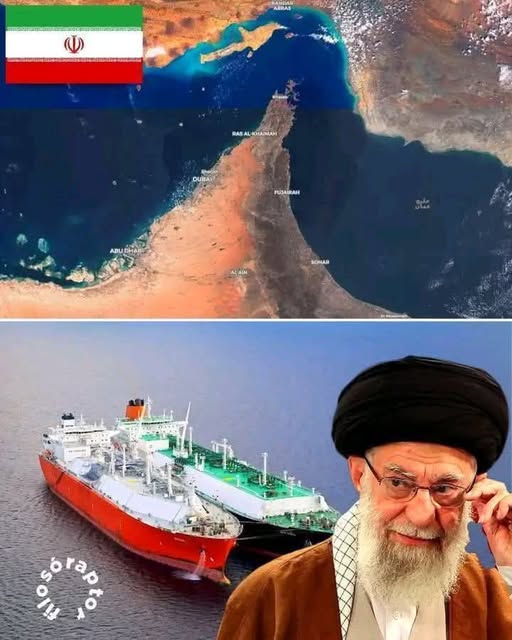When you think about global energy trade, you might picture oil rigs in the Middle East, pipelines across continents, or massive tankers sailing the seas. But there’s one narrow waterway that plays a disproportionately huge role in keeping the world running: the Strait of Hormuz.
This slender passage of water is just 34 kilometers wide at its narrowest point, yet it carries nearly 20% of the world’s oil and about one-third of its liquefied natural gas (LNG). In many ways, it is the jugular vein of the global economy.
For countries like India, which relies heavily on imported energy, the Strait of Hormuz is not just a distant geographic feature—it’s a lifeline that directly affects petrol prices, electricity bills, airline tickets, and even the cost of groceries.
So, why is this strait so important? What risks are associated with its closure? And how do different powers—India, the U.S., and China—view its future? Let’s dive deep into one of the most strategic waterways in the world.
Where Is the Strait of Hormuz?
Geographically, the Strait of Hormuz is located between the Persian Gulf and the Gulf of Oman, serving as the only sea passage from the Persian Gulf to the open ocean. On one side lies Iran, and on the other, the United Arab Emirates (UAE) and Oman.
This chokepoint is the exit gate for the oil-rich nations of the Gulf, including Saudi Arabia, Iraq, Kuwait, Qatar, and the UAE. Almost every barrel of oil and every LNG shipment from these countries must pass through this narrow waterway before heading to markets in Asia, Europe, and beyond.
Why Is It So Important?
To understand the importance of the Strait of Hormuz, consider the following numbers:
- 20% of global oil trade passes through it daily.
- That equals about 18–20 million barrels of oil per day.
- Nearly one-third of LNG shipments also cross it.
- The U.S. Energy Information Administration calls it the world’s most important oil chokepoint.
For India, which imports over 80% of its crude oil needs, much of it from the Gulf, the Strait is indispensable. Without it, India’s energy security would face severe risks.
A Fragile Lifeline
The problem is that despite its importance, the Strait of Hormuz is highly vulnerable. Its narrow width, coupled with geopolitical tensions in the region, makes it a hotspot for potential disruption.
Iran, which borders the strait, has often threatened to block it during times of conflict. Even the mere suggestion of closure tends to send global oil prices skyrocketing.
History has already shown how fragile this waterway can be:
- 1980s “Tanker War”: During the Iran-Iraq War, oil tankers passing through the strait were attacked, causing disruptions in supply.
- 2019 Incidents: Several oil tankers were sabotaged or seized in the Gulf of Oman, rattling global markets.
- U.S.-Iran Tensions: Periodically, when Washington imposes sanctions on Tehran, Iran responds with threats regarding Hormuz.
What If the Strait Is Blocked?
The question many people ask is: what happens if the Strait of Hormuz is blocked, even temporarily?
The consequences would be immediate and severe:
- Oil Prices Would Surge
- A closure could send crude oil prices soaring past $150 per barrel.
- Petrol and diesel prices in India would climb rapidly.
- Impact on India
- India’s monthly fuel import bill would skyrocket.
- Airlines would face higher jet fuel costs, making flights more expensive.
- Transportation costs would rise, leading to higher food and consumer goods prices.
- Global Recession Fears
- Higher energy costs affect everything—from manufacturing to shipping.
- Economists warn that prolonged closure could trigger a global economic slowdown.
- Military Tensions
- The U.S. Fifth Fleet, stationed in Bahrain, would likely intervene.
- Regional powers like Saudi Arabia and the UAE would push back against Iran.
- The risk of wider conflict would increase.
How Is India Preparing?
India understands its vulnerability when it comes to energy imports. Over the years, it has taken steps to reduce risk:
- Strategic Petroleum Reserves (SPRs): India has built underground storage facilities in places like Visakhapatnam, Mangaluru, and Padur. These can store about 9–10 days’ worth of crude oil. Plans are underway to expand this capacity.
- Diversification of Suppliers: While the Gulf remains India’s primary source, New Delhi is increasingly buying from the U.S., Russia, and Latin America.
- Investment in Renewables: India is aggressively expanding solar and wind energy capacity to cut dependence on imported fossil fuels.
- Naval Presence: The Indian Navy regularly patrols sea lanes to protect merchant vessels, especially in times of heightened tension.
Still, in the event of a full blockade, India’s economy would feel significant pain.
The U.S. Strategy
The United States has long recognized the Strait of Hormuz as a vital interest. That’s why it maintains a strong naval presence in the Gulf, particularly through the Fifth Fleet.
Washington’s goals include:
- Ensuring freedom of navigation for oil and gas shipments.
- Deterring Iran from closing the strait.
- Protecting allies like Saudi Arabia, the UAE, and Kuwait.
The U.S. has historically used both diplomatic pressure and military deterrence to keep the strait open. Even today, American surveillance and naval exercises in the region serve as a constant reminder to potential disruptors.
China’s Growing Interest
China, the world’s largest oil importer, is also heavily dependent on Gulf energy. Naturally, Beijing has growing concerns about the Strait of Hormuz.
China’s approach includes:
- Expanding Naval Presence: Chinese warships have joined international anti-piracy missions in nearby waters.
- Energy Diplomacy: Through its Belt and Road Initiative (BRI), China has invested in ports and energy infrastructure across the Middle East.
- Closer Ties with Iran: China signed a long-term cooperation agreement with Iran, signaling its intent to safeguard its energy interests.
In any crisis, Beijing would likely play a key role in negotiations, balancing its economic needs with its rivalry and cooperation with the U.S.
Lessons From History
The Strait of Hormuz has seen multiple crises, but one lesson stands out: even short-term disruptions can cause global panic.
For example:
- In 2011, when Iran threatened to close the strait during a standoff over its nuclear program, oil prices spiked nearly 20%.
- During the 2019 tanker attacks, markets immediately reacted, despite the fact that shipping continued.
This shows just how sensitive the global economy is to even the possibility of closure.
The Bigger Picture
The Strait of Hormuz is not just a geographic location—it’s a symbol of the world’s energy dependence. Until countries transition more decisively to renewable energy, chokepoints like Hormuz will remain critical vulnerabilities.
For India, the lesson is clear:
- Build more reserves.
- Diversify energy sources.
- Invest in green technology.
- Strengthen diplomatic and naval strategies to protect trade routes.
Final Thoughts
A strip of water just 33–34 kilometers wide holds the power to shape the fate of nations. The Strait of Hormuz is both a lifeline and a potential flashpoint.
For India, its closure could mean skyrocketing fuel costs, higher inflation, and economic stress. For the world, it could spell an energy shock and even trigger global recession.
That’s why this narrow waterway, invisible on most maps, is closely watched by every government, oil company, and consumer. The next time you fill your car with petrol or book a flight, remember: somewhere thousands of miles away, the stability of a tiny stretch of sea is silently influencing the price you pay.



